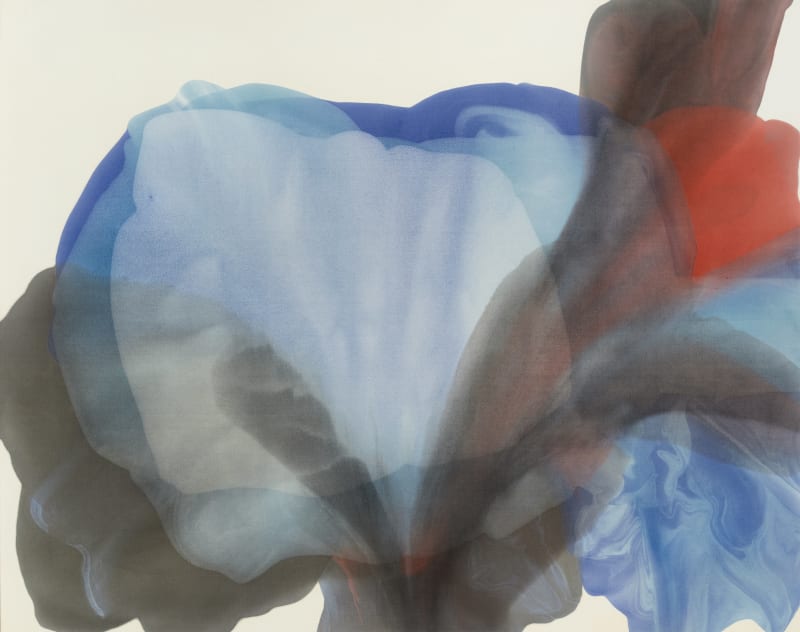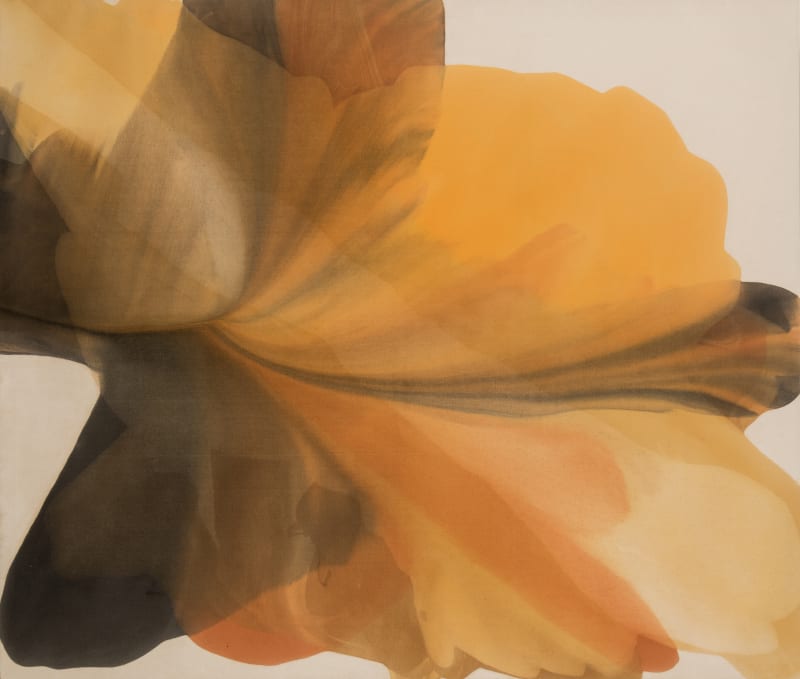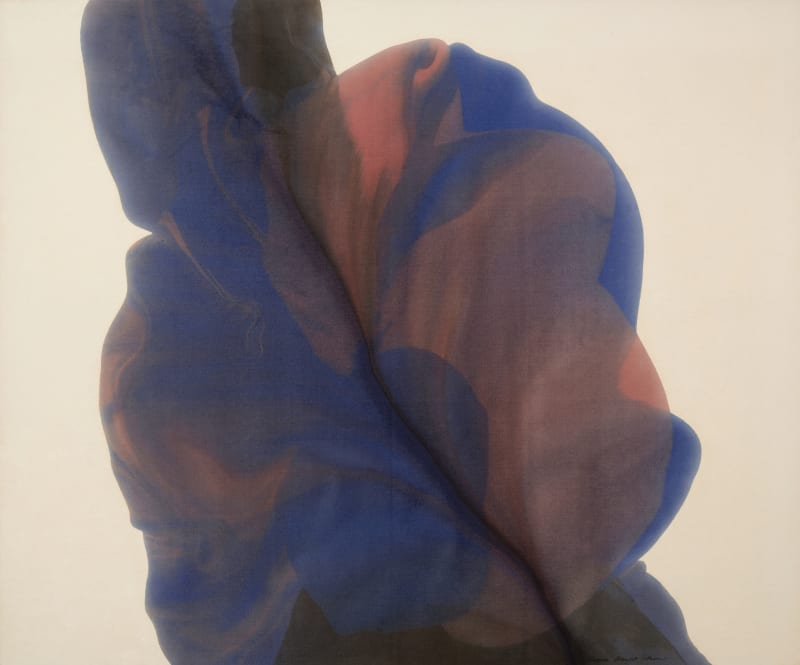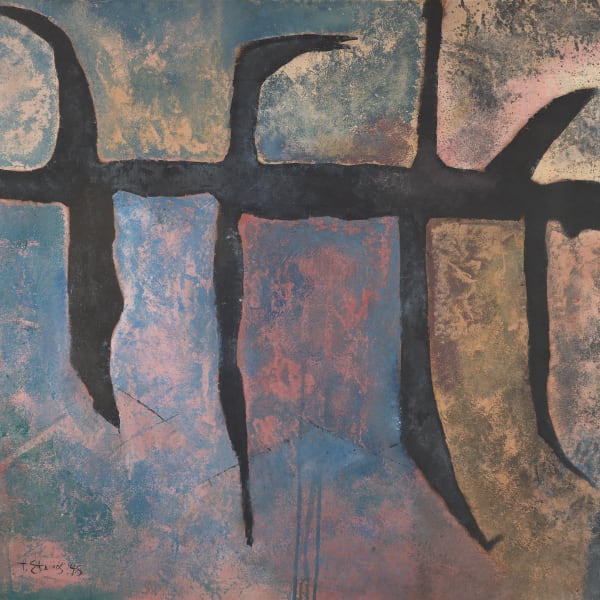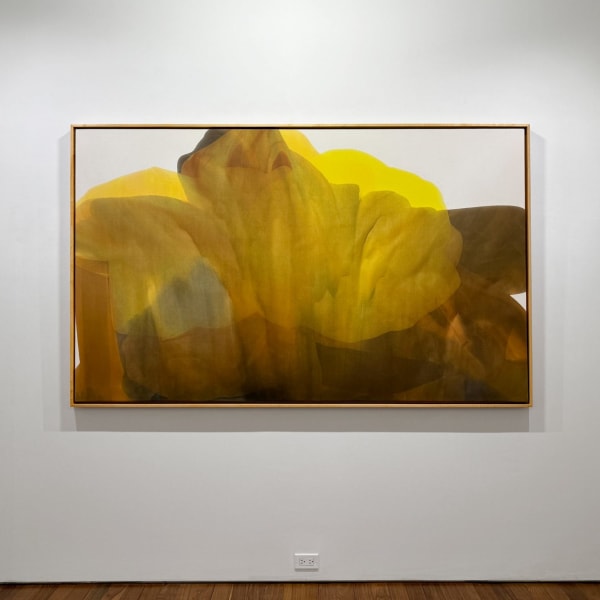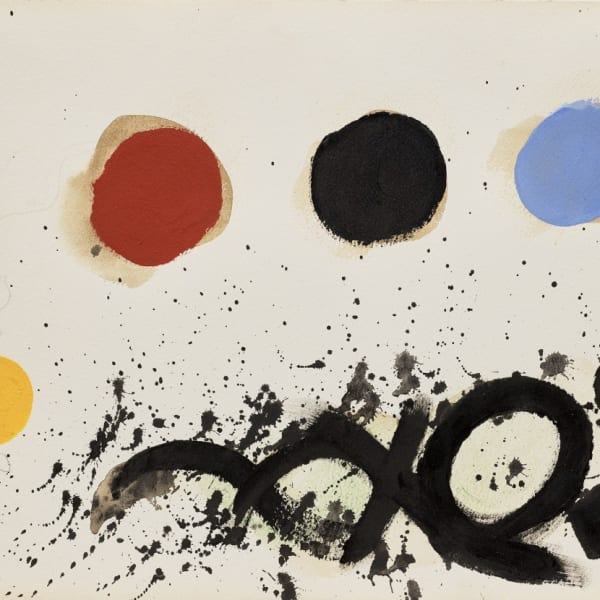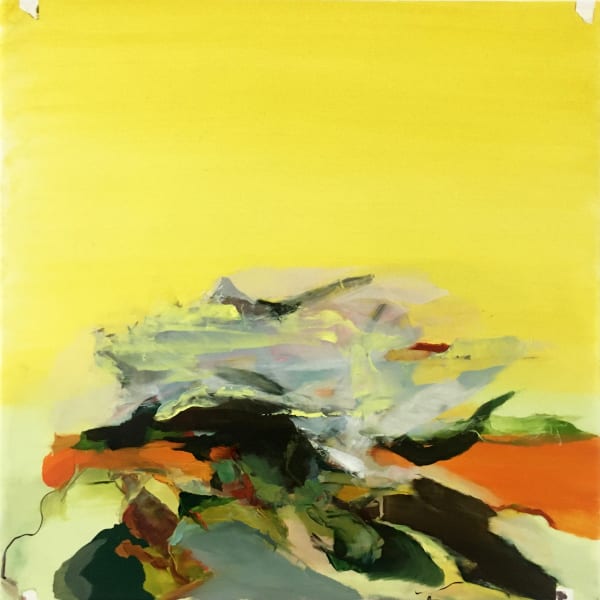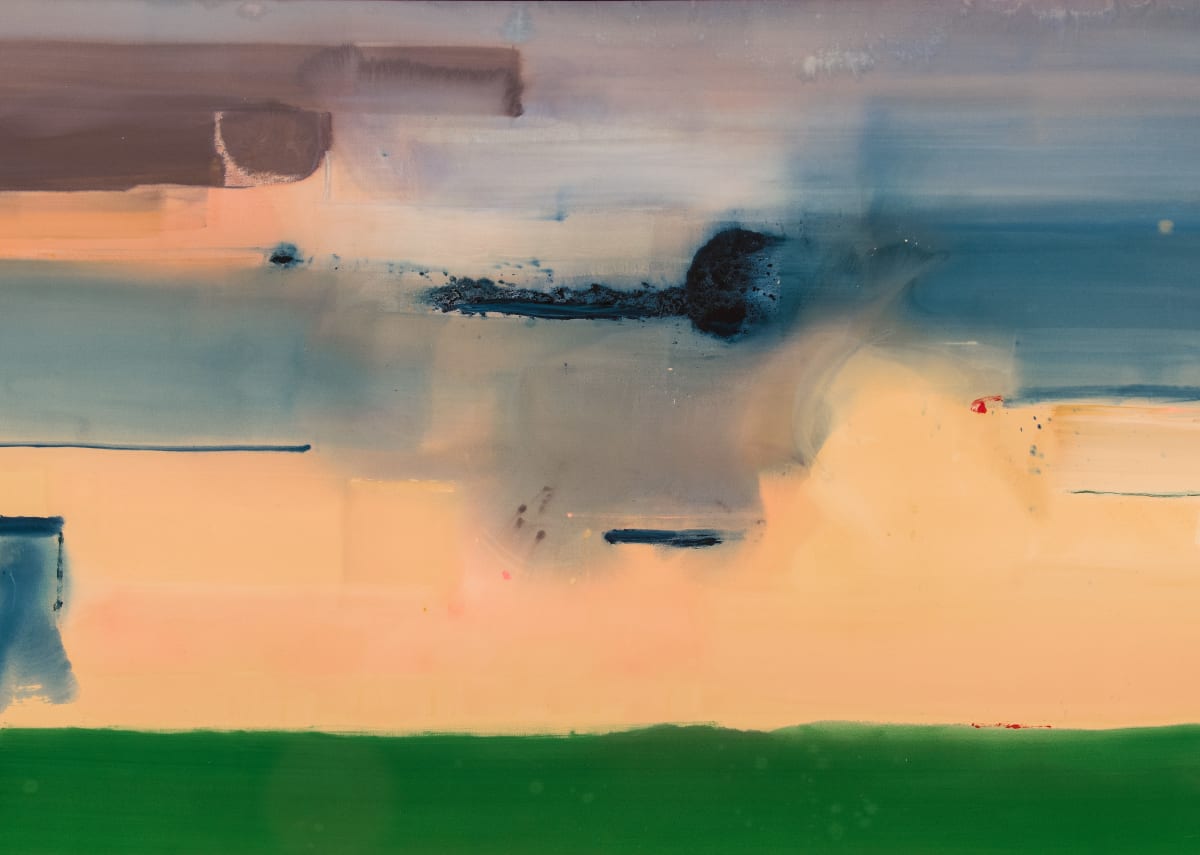
These blooms of pure color manage to be simultaneously serene and dramatic as they radiate warm, earthy tones.
Irene Stern’s luminous and elegant paintings evolved out of her early work in watercolor, a progression evident in the almost liquid flow of colors across her large compositions. In these works, tones melt together and “veils of pigment appear to fold over one another, creating illusory creases and hollows.” (1) The overall affect is one of slow, powerful visual rhythms. Stern’s semi-translucent, gossamer colors billow across her surfaces, soaking into the unprimed canvas to create tactile fusions of paint and support that envelope the viewer in diaphanous veils of paint.
Irene Stern’s luminous and elegant paintings evolved out of her early work in watercolor, a progression evident in the almost liquid flow of colors across her large compositions. In these works, tones melt together and “veils of pigment appear to fold over one another, creating illusory creases and hollows.” (1) The overall affect is one of slow, powerful visual rhythms. Stern’s semi-translucent, gossamer colors billow across her surfaces, soaking into the unprimed canvas to create tactile fusions of paint and support that envelope the viewer in diaphanous veils of paint.
Stern’s pure abstract forms call to mind the stained canvases of Morris Louis and Helen Frankenthaler, but her work embodies a unique elegance that differentiates it from that of her color field contemporaries. Where Louis harnessed the power of gravity to pull his pigments down the canvas and Frankenthaler very deliberately pushed her paints around, Stern’s colors seem to grow and blossom organically across the composition. These blooms of pure color manage to be simultaneously serene and dramatic as they radiate warm, earthy tones.
Responding to an exhibition at San Francisco’s Source Gallery in 1975, one critic meditated on the relationship between Stern and Louis: “… technique is all they share; the statements both artists make about the nature of paint differ. Louis’ stains and pours often follow the force of gravity, so that paint appears to be drawn by its own pull towards the periphery of the canvas. Stern, on the other hand, makes acrylic seem weightless. It floats on white pristine canvas. It masses into rich areas with a spatial depth that Louis’ works lack. It is forced onto the surface in many directions by an energy source beyond the paintings’ edges.” (2)
Irene Monat was born in 1932 in Poland and survived the Holocaust at a very young age. She moved to Paris in 1948, and then to New York in 1954. There she met the accomplished abstract sculptor Jan Peter Stern, whose large public commissions can be seen throughout New York City and across the country, and the couple married the next year. While in New York, Stern took art courses at the New York School for Social Research, the Museum of Modern Art, and the Whitney Museum of American Art. The Sterns finally settled in Southern California in 1965, and it was there that both Irene and Peter’s careers flourished. The couple had a very supportive artistic relationship and often exhibited together. Irene’s painting activity dwindled beginning in the early 1980s, as she became more and more essential as a caretaker after her husband’s Parkinson’s diagnosis. She cared for him exclusively for the last 25 years of his life.
Irene Stern’s work has been exhibited at the Source Gallery, San Francisco; The American Academy of Arts and Letters, New York; Ester Robles Gallery, Los Angeles; the Los Angeles County Museum of Art; the Brandt Library and Art Museum, Glendale; and the Metropolitan Museum of Art, New York, and was collected by individuals, corporations, and museums such as the National Gallery, Joseph H. Hirshhorn, G.E. World Headquarters, and First National City Bank. Stern’s paintings can presently be found in the collection of the Hirshhorn Museum and Sculpture Garden in Washington, D.C.
1. Judith L. Dunham, "Irene Stern Paintings," Artweek. 31 May 1975.
2. Ibid.
Works














